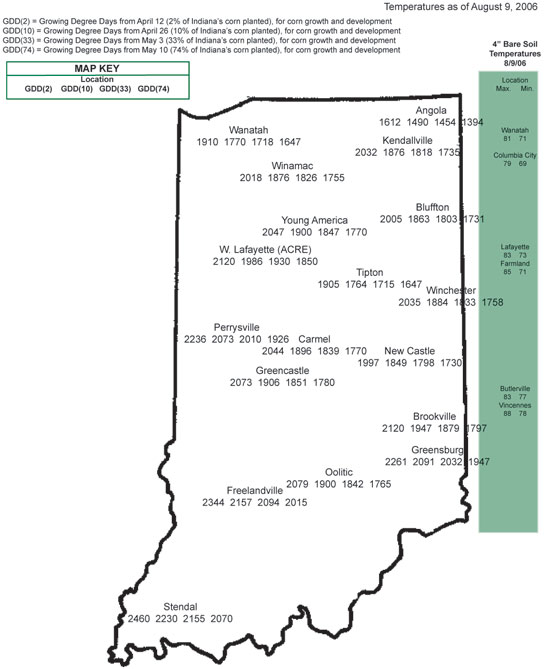Pest & Crop Newsletter, Entomology Extension, Purdue University
Stinging Caterpillars - (John Obermeyer and Christian Krupke)
- Two caterpillar species now feeding on field crops can inflict painful stings.
- Other caterpillars, such as woollybears and thistle caterpillars, are harmless.
Pest managers occasionally observe or FEEL peculiar-looking caterpillars feeding on the leaves of corn and soybean this time of the year. Look carefully before you touch! Two species, the Io caterpillar and the Saddleback caterpillar, found in fields can sting when brushed against! Though both species can be found on many different plants, in field crops the Io feeds on both corn and soybean, while the saddleback is only encountered in corn.
The bodies of these caterpillars are covered with “stinging” or “urticating” hairs, which produce a stinging sensation and temporary rash when the caterpillars come into contact with the skin. These stinging hairs resemble spines; whereas the often encountered and harmless woollybear is just hairy looking. To add confusion to the matter, there are many more formidable looking caterpillars found on various plant species that are harmless. The old adage, when in doubt, leave it alone applies here.
Should you come in contact with one of these caterpillars, most victims experience short-lived pain likened to that of “hot needles” and then temporary reddening of the skin. Happy Scouting!

Io caterpillar in corn (stings)

Saddleback caterpillar in corn (stings)

Thistle caterpillar (harmless)

Woollybear caterpillar (harmless)
![]()
Worms in the Ear - (John Obermeyer and Christian Krupke)
Excitement about worms in corn ears seems to be at an all-time high, which isn’t saying much. Most likely the trapping of western bean cutworm moths for the first time in Indiana has spurred this “frenzy.” Regardless, we welcome anything that will get folks out this time of year to inspect crops. These caterpillars can be very similar in appearance and habits, so identification to species of some of the worms in ears can be tricky. Some identification tips, though not foolproof, appear below for the corn earworm, western bean cutworm, fall armyworm and European corn borer. In general, you cannot use overall body color for identification.




![]()
Click for Table.
Black Light Catch Report.
![]()


